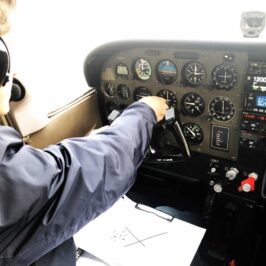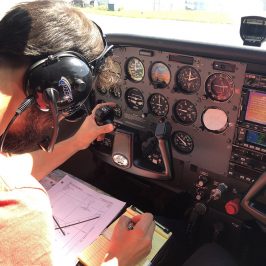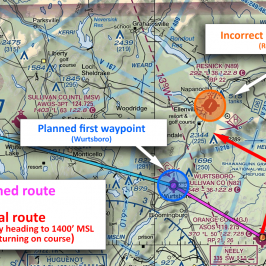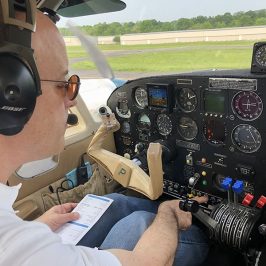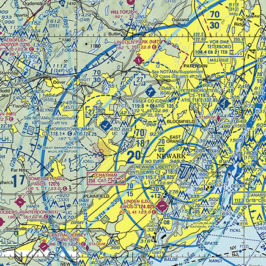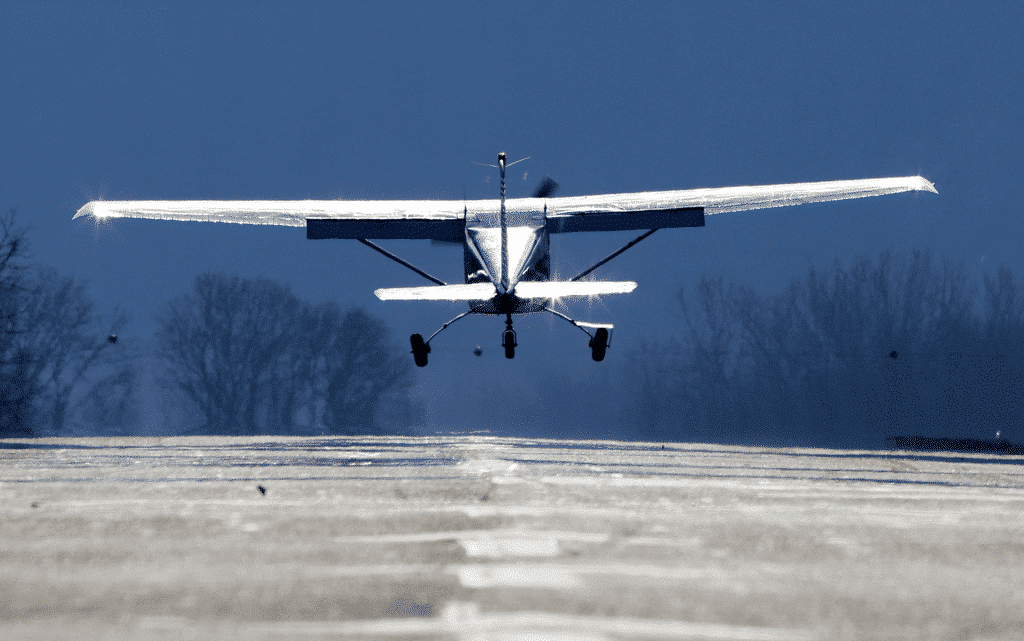
Let’s run through a common checkride scenario. It starts with the Private Pilot or Commercial Pilot applicant providing his or her VFR cross-country flight plan to the pilot examiner.
Examiner: “I see you flight planned 110 knots true airspeed at cruise. Where does that figure come from?”
Freeze the frame. Insofar as Task I.D., “Cross-Country Flight Planning” and Task I.F., “Performance and Limitations” are concerned, this is the pivotal moment where practical tests may veer one key direction or the other. A correct, comprehensive response steers the outcome in a positive direction. An incorrect one — well, you can probably guess.
Here are a few of the less desirable answers.
- “It’s a good round number.”
- “That’s usually about what we get when we’re flying this airplane.”
- “That’s what ForeFlight put in there.”
Wow – let’s not do that! Instead, we’ll work through it the right way. Let’s determine cruise TAS for a Cessna 172S model airplane.
Pull out the AFM
And the first reveal: generally, the only correct answer to the question “where did your cruise true airspeed for that leg come from?” is the Airplane Flight Manual (the Pilot’s Operating Handbook is an equivalent document for this purpose — and of course, not all airplanes have one. If you’re flying a J-3 Cub, for example, all bets are off). Here’s an excerpt from the Cessna 172S POH. Figure 5-8, Cruise Performance. The only airspeed referenced is KTAS.
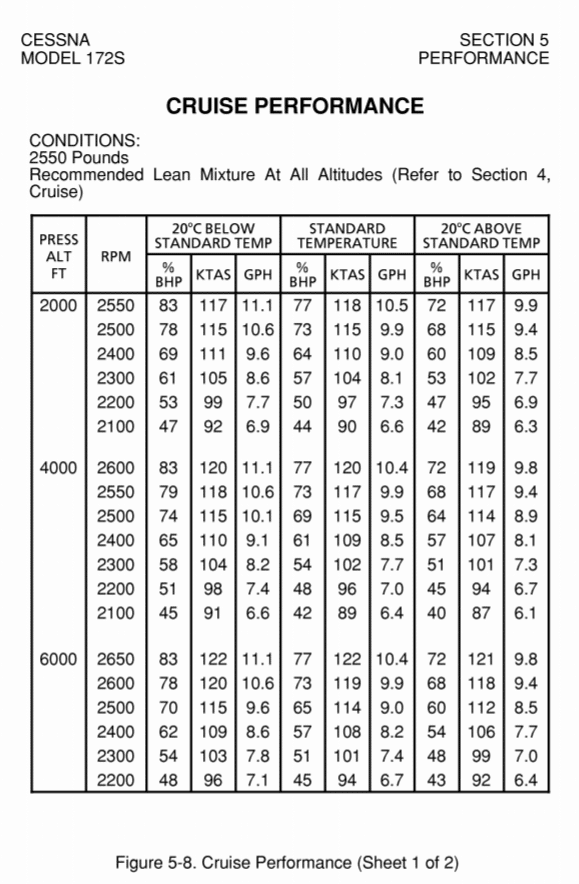
If the applicant utilizes this particular document correctly, he or she will also be able to explain:
Pressure altitude
The chart references altitudes in PA (Pressure Altitude), which requires consideration from the applicant. From the Pilot’s Handbook of Aeronautical Knowledge:
Pressure altitude is the height above the standard datum plane (SDP). The aircraft altimeter is essentially a sensitive barometer calibrated to indicate altitude in the standard atmosphere. If the altimeter is set for 29.92 “Hg SDP, the altitude indicated is the pressure altitude—the altitude in the standard atmosphere corresponding to the sensed pressure. The SDP is a theoretical level at which the pressure of the atmosphere is 29.92 “Hg and the weight of air is 14.7 psi. As atmospheric pressure changes, the SDP may be below, at, or above sea level. Pressure altitude is important as a basis for determining aircraft performance, as well as for assigning flight levels to aircraft operating at above 18,000 feet. The pressure altitude can be determined by any of the three following methods:
1. By setting the barometric scale of the altimeter to 29.92 “Hg and reading the indicated altitude,
2. By applying a correction factor to the indicated altitude according to the reported “altimeter setting,” [Pilot’s Handbook of Aeronautical Knowledge, Figure 11-3]
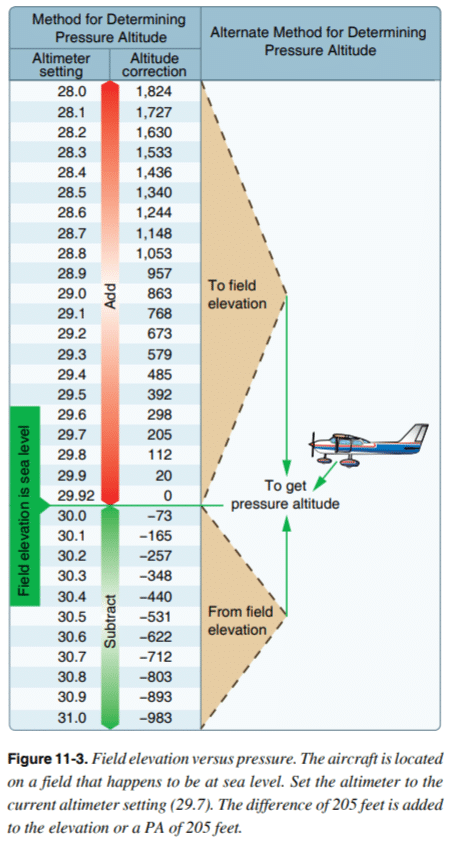
3. By using a flight computer
Interpolating between values
Any VFR cruising altitude would require interpolation between rows and columns.
Operating limitations
Operating limitations in terms of % BHP. A note on Sheet 2 of this chart references Chapter 4 (Normal Procedures, Cruise), which states:

Therefore, selecting a % BHP higher than 75% would be inappropriate. There are a number of 75% plus power settings available to the applicant below 6,000 feet Pressure Altitude. Be careful! These are not available for cruise.
Understanding ISA (International Standard Atmosphere)
The Cessna 172S Cruise Performance chart references “standard temperature”: below 20°C, standard, and above 20°C. The common mistake here is applying the correction to the temperature at airport elevation rather than cruise altitude. This temperature can be derived from a Winds Aloft forecast, or by using the standard lapse rate of 2°C per 1,000 feet of altitude. In plain language, standard temperature at 4,500 feet is not 15°C!
From the Pilot’s Handbook of Aeronautical Knowledge, Chapter 4:
“The pressure of the atmosphere varies with time and location. Due to the changing atmospheric pressure, a standard reference was developed. The standard atmosphere at sea level is a surface temperature of 59 °F or 15 °C and a surface pressure of 29.92 inches of mercury (“Hg) or 1,013.2 mb. [Figure 4-2] A standard temperature lapse rate is when the temperature decreases at the rate of approximately 3.5 °F or 2 °C per thousand feet up to 36,000 feet, which is approximately –65 °F or –55 °C. Above this point, the temperature is considered constant up to 80,000 feet. A standard pressure lapse rate is when pressure decreases at a rate of approximately 1 “Hg per 1,000 feet of altitude gain to 10,000 feet. [Figure 4-3] The International Civil Aviation Organization (ICAO) has established this as a worldwide standard, and it is often referred to as International Standard Atmosphere (ISA) or ICAO Standard Atmosphere. Any temperature or pressure that differs from the standard lapse rates is considered nonstandard temperature and pressure.”
Correlating power settings with fuel burn and KTAS
Last but certainly not least, this will force the applicant to select an RPM setting to maintain to hold the desired True Airspeed and ensure the expected fuel burn in gallons per hour (GPH).
Knot for nothing, but…
All of this is well and good. Let’s assume the applicant selected an appropriate power setting — perhaps 118 KTAS at 4,500 feet (slight bump for interpolation), standard temperature, 2550 RPM (73% BHP), and referenced it somewhere on the VFR navigation log (a great idea.) Now this…
Examiner: “What indicated airspeed (IAS) will you need to see on your airspeed indicator to verify you’re getting the performance you planned?”

